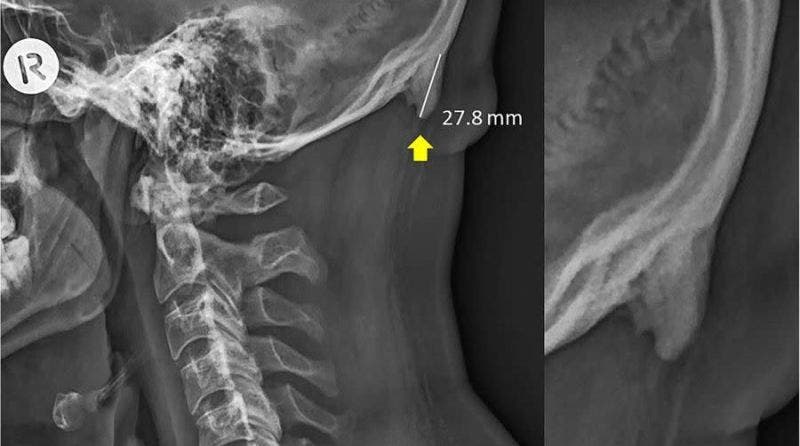
Soon it might be possible to easily be able to distinguish the iGeneration from their trademark skull horns. While it is far from the devil’s domain, an odd and terrifying study out of the University of the Sunshine Coast in Queensland, Australia, had found evidence that the frequent use of mobile devices could actually alter one’s physiology. Specifically, the study found very short horn-like bone spurs on young adults, who most frequently use the devices.
The research discovered that constant forward tilting of the head can cause the skull tails as the tilting shifts weight from the spine to the muscles at the back of the head, causing bone growth in the connecting tendons and ligaments.
“Our findings raise a concern about the future musculoskeletal health of the young adult population and reinforce the need for prevention intervention through posture improvement education,” the scientists noted in the report, which was originally published a year ago, but has come to more prominent attention recently.
The study, published in the Journal of Anatomy in 2016, was recently brought back into the light by the BBC and Washington Post. It looked at 218 subjects between 18 and 30 in 2016 and found that the growths occurred in 41 percent of those tested, ranging from 10 to 30 millimeters.
However, before you panic and renounce all technology, David Shahar and Mark Sayers, who wrote the study, did not specifically state cell phones were the cause. The finding was that poor posture was causing the spurs and the researchers were only making an educated guess based on the signs and said that future research could shed better light on the matter.
The danger is not the head horn itself, Sayers, an associate professor of biomechanics at Sunshine Coast who served as Shahar’s supervisor and co-author, told the Washington Post. Rather, the formation is a “portent of something nasty going on elsewhere, a sign that the head and neck are not in the proper configuration.”
So while there might be an I-told-you-so story to scare you kids off of the screentime (for which experts recommend only two hours per day for 8 to 18-year-olds and an hour from those two to five), the condition can take years to form. It’s not to say that worries the study are causing aren’t completely unwarranted though. A poll made by Common Sense Media regarding mobile device usage shows that half of most teens are addicted to their mobile devices. A report by Counterpoint Research revealed that the average consumer spends five hours a day on their smartphones with one in four users spending more than seven hours a day in front of a device.
Shahar is pressing smartphone users to become as regimented about posture as people became about dental hygiene in the 1970s, when brushing and flossing every day were touted to avoid poor dental health. Schools should teach simple posture strategies, he said. Everyone who uses technology during the day should get used to recalibrating their posture at night.
So if your curious if you might be sporting the trait, he suggested reaching a hand around to the lower rear of the skull. Those who have the hornlike feature likely can feel it.






